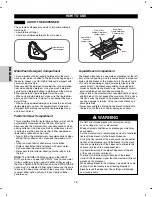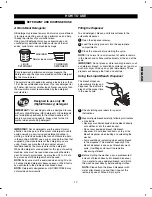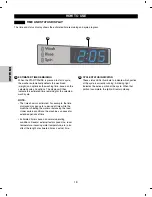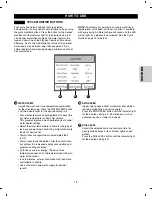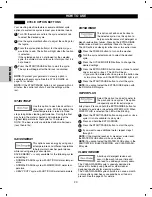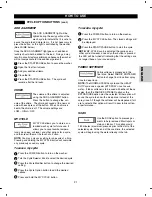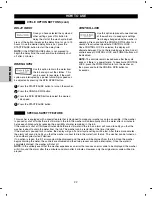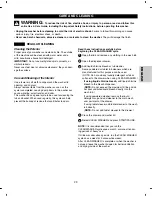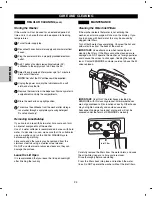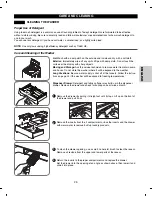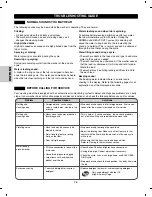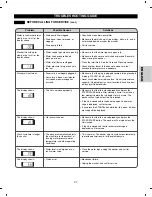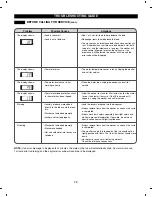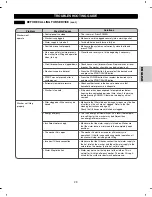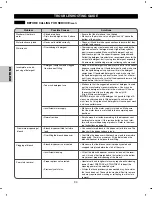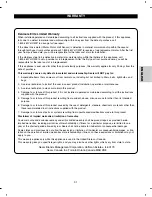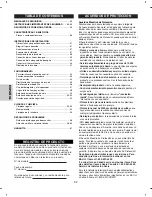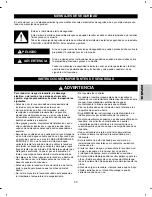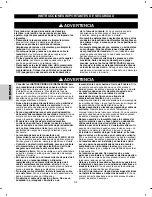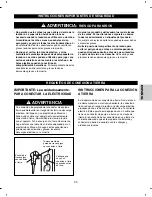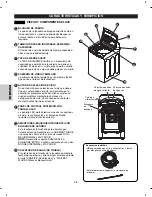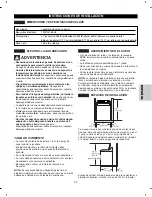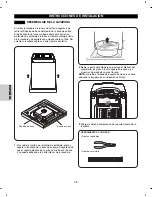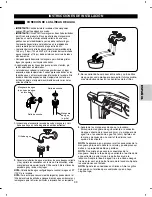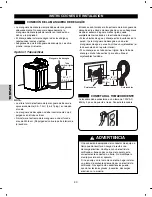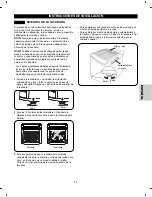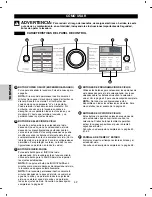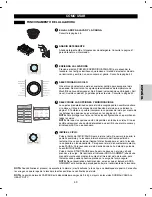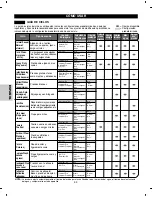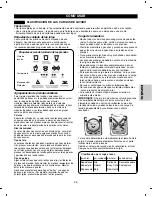
30
TROUBLESHOOTING GUIDE
BEFORE CALLING FOR SERVICE
(cont.)
ENGLISH
Problem
Possible Causes
Solutions
• Kinked drain hose
• Drain located higher than 8' above
floor
• Ensure that the drain hose is not kinked.
• Make sure the drain hose is no higher than 96" above the
bottom of the washer.
• Hoses not installed correctly
• Check all fill and drain hose connections to ensure that they
are tight and secure.
• Oversudsing of detergent
• Oversudsing may create leaks, and may be caused by the
type and amount of detergent used. High-efficiency deter-
gent is recommended. Make sure that detergent and any
additives are put into the correct dispenser compartments.
Follow the detergent manufacture's recommendations for the
amount of detergent, but try using less detergent, especially
if home water conditioning or water softening units are used.
• Detergent compartments clogged
from incorrect filling
• Make sure that detergent and additives are put in to the correct
dispenser compartments. If liquid detergent is used, make sure
that the liquid detergent cup and insert are in the detergent
compartment. If powdered detergent is used, make sure that
the liquid detergent cup and insert are not used. For all deter-
gent types, always make sure that the dispenser drawer is fully
closed before the start of the cycle.
• Too much detergent use
• Make sure that the suggested amount of detergent is used
per the manufacture's recommendations. You may also
dilute the detergent with water to the maximum fill line on
the compartment to avoid clogging. Use only HE
(High- Efficiency) detergent.
NOTE:
Always use as little detergent as possible. High effi-
ciency washers need very little detergent to achieve opti-
mum results. Using too much detergent will cause poor wash
and rinse performance.
• Insufficient water supply
• Make sure that the water supply is turned on. Make sure
that the water faucets are turned to their completely open
positions.
• Normal residue
• Small amounts of residue remaining in the dispenser com-
partments are normal. If this residue builds up it can inter-
fere with normal dispensing of products. Refer to the clean-
ing instructions on page 25.
• Bleach dispenser filled for future
load
• You cannot store bleach in the dispenser for future use. The
bleach will be dispensed every load.
• Overfilling the bleach dispenser
• Overfilling the dispenser with bleach may lead to premature
dispensing. There is a maximum fill line indicated on the
bleach dispenser to help avoid overfilling.
• Bleach dispenser is not seated
• Make sure that the bleach cover is properly seated and
snapped into place before the start of the cycle.
• Insufficient cleaning
• Lift out the bleach dispenser cover and clean out the reser-
voir. Lint and other foreign debris that collects in the bottom
may prevent proper dispensing of the bleach.
• Proper options not selected.
• Previously set stains.
• Heavier soils and tougher stains may require extra cleaning
power. Select PRESOAK or STAIN TREAT to boost the
cleaning power of the selected cycle.
• Articles that have previously been washed may have stains
that have been set. These stains may be difficult to remove
and may require hand washing or retreating to aid in stain
removal.
Washer will not drain
water
Water leaks every load
Water leaks
Incomplete or no dis-
pensing of detergent
Premature dispensing of
bleach
Clogging of bleach
Poor stain removal
Содержание 796.2927 Series
Страница 92: ......

